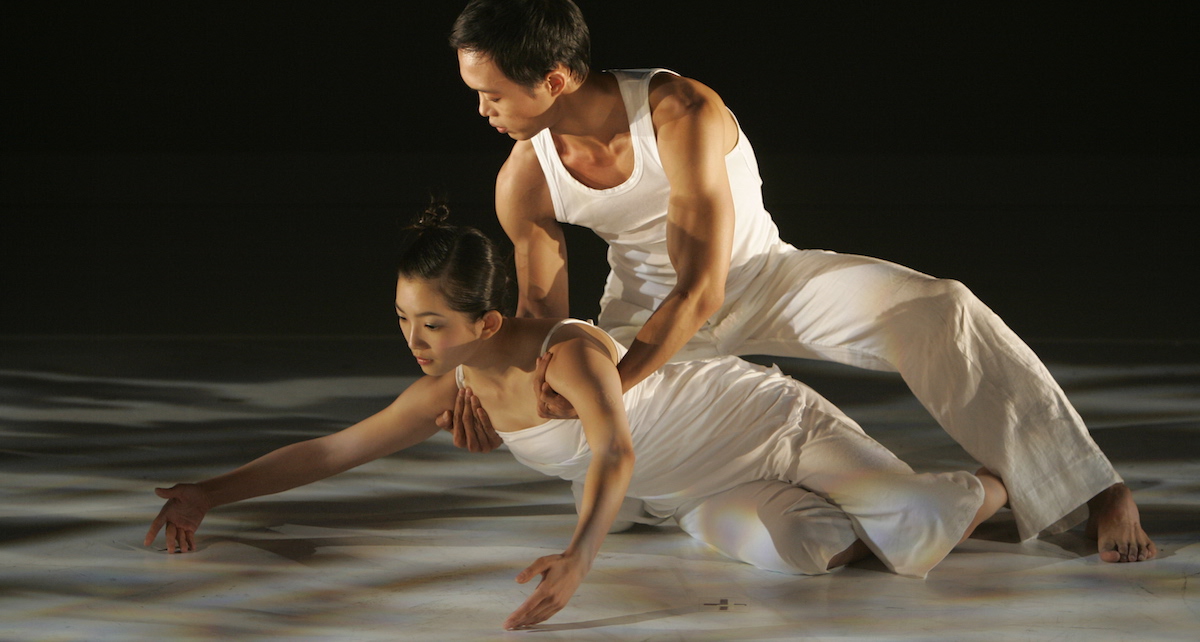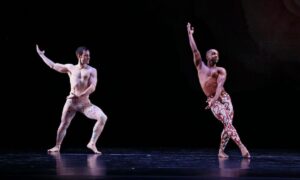From man’s beginnings, we danced in community. As cultures evolved and diversified, so did their dancing. Thus, unique cultural dances emerged worldwide. Contemporary dance works sometimes honor these distinct traditions. At other times, they focus on our commonalities – us all, no matter what our race or ethnicity, moving together. Some contemporary dance companions manage to do both those things, and quite artfully so. One such company is New York City-based H.T. Chen and Dancers, under Founder and Associate H.T. Chen and his wife and Associate Director Dian Dong.
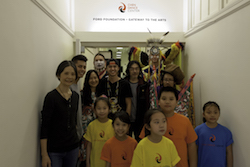
Dian Dong, H.T. Chen and students at the Chen Dance Center. Photo by Joe Boniello.
Dance Informa recently had the pleasure of conversing with Dong. As she describes, Chen’s pivotal works have been based on “Asian American immigration and labor”. These include Transparent Hinges (1996), based on Angel Island Immigration Station; Hidden Voices (1994), based on the 1870 story of Chinese strikebreakers in Western Massachusetts; Mott Street (1984), based on NYC’s Chinatown; Shore of Hope (1979), based on the Vietnamese boat people; Bian Dan (2000), based on acculturation and the generation gap in Asian families; and most recently South of Gold Mountain (2015), based on the Chinese who settled in deeply segregated southern communities before WWII.
The company lives in no kind of cultural isolation, however; company dancers are of many ethnicities. Dong can confidently and accurately affirm that H.T. Chen and Dancers has always been a very international troupe. “In South of Gold Mountain, [for instance,] you see very diverse cast of performers in terms of nationality and age,” she describes. The company also does extensive outreach to communities of people of all ethnicities, ages and socio-economic conditions. Dong tells how “in addition to touring and presenting concerts, H.T. Chen and Dancers presents extensive educational programming each year. The company has an annual matinee series for visiting school groups where excerpts from repertory works are presented in a curated program around a specific theme.”
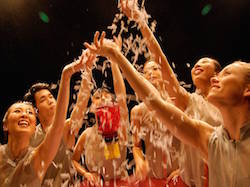
H.T. Chen and Dancers in ‘Between Heaven and Earth’. Photo courtesy of Chen Dance Center.
For instance, in the recent performances of South of Gold Mountain in Austin, Texas, the company “partnered with AARP to provide a movement class for seniors, conduct oral histories during lunch and performed for the group….[and] worked with the American Legion veterans, universities, Chinese community centers, family associations and local dancers,” Dong recounts. Clearly, the company does valuable service inside and outside of dance communities.
Through topics involved with Asian American identity, Chen’s repertory addresses powerful universal themes – sense of place and belonging, migration to and from where one calls home, assimilating into a norm or standing apart from it. They say that good writers write about what they know, yet speak to things far beyond that. In my view, that holds true with choreographers. When creating movement and movement narratives, our unique identities are a starting point. That’s only logical, as it’s what we know fullest and most clearly. But through that we find commonalities that speak louder than our differences – in movement, not saying a word.
The performance company is but one part of a three-part system under Chen and Dong. They also direct a dance school and performance space. According to Dong, the performance space is “an alternative performing space for emerging dance artists to showcase their work to New York audiences and critics, and also provides support services for modern dancers.” She clarifies that they measure success not by tickets sold or other funding secured, but through “the quality of the interactions” — thus, the connections made in the Asian American community through the Chen Dance Center Theater practically speaking, to many Chinatown dancemakers and their artistic collaborators. Beyond that, the interactions that result have strong potential to bring pride and greater peace to the whole local community.
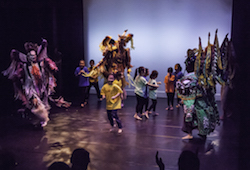
Students of The School at Chen Dance Center. Photo by Joe Boniello.
Concerning the school, Dong describes how she, her husband and instructors strive to create a commercialism-free environment there, bypassing expensive costumes and competitions. In fact, she very clearly affirms that they never attend competitions. Instead, the students wear simple and functional costumes and perform for the rewards of growing together in their art form. This approach seems to pay off. Dong describes how “our students find happiness in deeply learning, and many of them return after college or as young parents to register their own children.” Behind the approach is a belief that, as Dong states, “commercialism has a large impact on the art of dance, but we refuse to let our training program go in this direction.”
That fits in with the philosophy and resulting work of Chen and Dong’s overall company, in all its three parts. “Our contribution is to leave the community something for the future, for the next generation,” Dong states. “Chinatown, New York, should have a cultural center where children and families can participate in and enjoy the arts. New York City dance artists should have a place to create and present original works, and the legacy of Chinese in the Americas should be presented to a wide range of audiences.”
Chen, with his wife and dancers, as well as those involved with their school and performance spaces, work every day toward those goals. They embrace tradition, while welcoming in all who want to be a part of their vision. They dance to remember, while also creating anew. May they set an inspiring and beautiful example for us all!
Click here to learn more about and/or support H.T. Chen and Dancers.
By Kathryn Boland of Dance Informa.
Photo (top): H.T. Chen and Dancers in ‘Shift’. Photo by Carol Rosegg.


